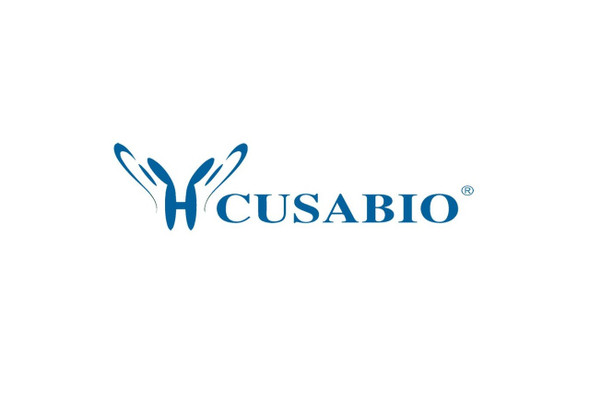Cusabio Human Recombinants
Recombinant Human 2-5A-dependent ribonuclease (RNASEL), partial | CSB-EP313223HU1
- SKU:
- CSB-EP313223HU1
- Availability:
- 13 - 23 Working Days
Description
Recombinant Human 2-5A-dependent ribonuclease (RNASEL), partial | CSB-EP313223HU1 | Cusabio
Alternative Name(s): Ribonuclease 4Ribonuclease L ;RNase L
Gene Names: RNASEL
Research Areas: Epigenetics and Nuclear Signaling
Organism: Homo sapiens (Human)
AA Sequence: HPPAEDWKPQSSHWGAALKDLHRIYRPMIGKLKFFIDEKYKIADTSEGGIYLGFYEKQEVAVKTFCEGSPRAQREVSCLQSSRENSHLVTFYGSESHRGHLFVCVTLCEQTLEACLDVHRGEDVENEEDEFARNVLSSIFKAVQELHLSCGYTHQDLQPQNILIDSKKAAHLADFDKSIKWAGDPQEVKRDLEDLGRLVLYVVKKGSISFEDLKAQSNEEVVQLSPDEETKDLIHRLFHPGEHVRDCLSDLLGHPFFWTWESRYRTLRNVGNESDIKTRKSESEILRLLQPGPSEHSKSFDKWTTKINECVMKKMNKFYEKRGNFYQNTVGDLLKFIRNLGEHIDEEKHKKMKLKIGDPSLYFQKTFPDLVIYVYTKLQNTEYRKHFPQTHSPNKPQCDGAGGASGLASPGC
Source: E.coli
Tag Info: N-terminal 6xHis-SUMO-tagged
Expression Region: 330-741aa
Sequence Info: Partial
MW: 63.4 kDa
Purity: Greater than 90% as determined by SDS-PAGE.
Relevance: Endoribonuclease that functions in the interferon (IFN) antiviral response. In INF treated and virus infected cells, RNASEL probably mediates its antiviral effects through a combination of direct cleavage of single-stranded viral RNAs, inhibition of protein synthesis through the degradation of rRNA, induction of apoptosis, and induction of other antiviral genes. RNASEL mediated apoptosis is the result of a JNK-dependent stress-response pathway leading to cytochrome c release from mitochondria and caspase-dependent apoptosis. Therefore, activation of RNASEL could lead to elimination of virus infected cells under some circumstances. Might play a central role in the regulation of mRNA turnover.
Reference: The DNA sequence and biological annotation of human chromosome 1.Gregory S.G., Barlow K.F., McLay K.E., Kaul R., Swarbreck D., Dunham A., Scott C.E., Howe K.L., Woodfine K., Spencer C.C.A., Jones M.C., Gillson C., Searle S., Zhou Y., Kokocinski F., McDonald L., Evans R., Phillips K. , Atkinson A., Cooper R., Jones C., Hall R.E., Andrews T.D., Lloyd C., Ainscough R., Almeida J.P., Ambrose K.D., Anderson F., Andrew R.W., Ashwell R.I.S., Aubin K., Babbage A.K., Bagguley C.L., Bailey J., Beasley H., Bethel G., Bird C.P., Bray-Allen S., Brown J.Y., Brown A.J., Buckley D., Burton J., Bye J., Carder C., Chapman J.C., Clark S.Y., Clarke G., Clee C., Cobley V., Collier R.E., Corby N., Coville G.J., Davies J., Deadman R., Dunn M., Earthrowl M., Ellington A.G., Errington H., Frankish A., Frankland J., French L., Garner P., Garnett J., Gay L., Ghori M.R.J., Gibson R., Gilby L.M., Gillett W., Glithero R.J., Grafham D.V., Griffiths C., Griffiths-Jones S., Grocock R., Hammond S., Harrison E.S.I., Hart E., Haugen E., Heath P.D., Holmes S., Holt K., Howden P.J., Hunt A.R., Hunt S.E., Hunter G., Isherwood J., James R., Johnson C., Johnson D., Joy A., Kay M., Kershaw J.K., Kibukawa M., Kimberley A.M., King A., Knights A.J., Lad H., Laird G., Lawlor S., Leongamornlert D.A., Lloyd D.M., Loveland J., Lovell J., Lush M.J., Lyne R., Martin S., Mashreghi-Mohammadi M., Matthews L., Matthews N.S.W., McLaren S., Milne S., Mistry S., Moore M.J.F., Nickerson T., O'Dell C.N., Oliver K., Palmeiri A., Palmer S.A., Parker A., Patel D., Pearce A.V., Peck A.I., Pelan S., Phelps K., Phillimore B.J., Plumb R., Rajan J., Raymond C., Rouse G., Saenphimmachak C., Sehra H.K., Sheridan E., Shownkeen R., Sims S., Skuce C.D., Smith M., Steward C., Subramanian S., Sycamore N., Tracey A., Tromans A., Van Helmond Z., Wall M., Wallis J.M., White S., Whitehead S.L., Wilkinson J.E., Willey D.L., Williams H., Wilming L., Wray P.W., Wu Z., Coulson A., Vaudin M., Sulston J.E., Durbin R.M., Hubbard T., Wooster R., Dunham I., Carter N.P., McVean G., Ross M.T., Harrow J., Olson M.V., Beck S., Rogers J., Bentley D.R.Nature 441:315-321(2006)
Storage: The shelf life is related to many factors, storage state, buffer ingredients, storage temperature and the stability of the protein itself. Generally, the shelf life of liquid form is 6 months at -20?/-80?. The shelf life of lyophilized form is 12 months at -20?/-80?.
Notes: Repeated freezing and thawing is not recommended. Store working aliquots at 4? for up to one week.
Function: Endoribonuclease that functions in the interferon (IFN) antiviral response. In INF treated and virus infected cells, RNASEL probably mediates its antiviral effects through a combination of direct cleavage of single-stranded viral RNAs, inhibition of protein synthesis through the degradation of rRNA, induction of apoptosis, and induction of other antiviral genes. RNASEL mediated apoptosis is the result of a JNK-dependent stress-response pathway leading to cytochrome c release from mitochondria and caspase-dependent apoptosis. Therefore, activation of RNASEL could lead to elimination of virus infected cells under some circumstances. In the crosstalk between autophagy and apoptosis proposed to induce autophagy as an early stress response to small double-stranded RNA and at later stages of prolonged stress to activate caspase-dependent proteolytic cleavage of BECN1 to terminate autophagy and promote apoptosis
Involvement in disease: Prostate cancer, hereditary, 1 (HPC1)
Subcellular Location: Cytoplasm, Mitochondrion
Protein Families: Protein kinase superfamily
Tissue Specificity: Highly expressed in spleen and thymus followed by prostate, testis, uterus, small intestine, colon and peripheral blood leukocytes.
Paythway: NOD-likereceptorsignalingpathway
Form: Liquid or Lyophilized powder
Buffer: If the delivery form is liquid, the default storage buffer is Tris/PBS-based buffer, 5%-50% glycerol. If the delivery form is lyophilized powder, the buffer before lyophilization is Tris/PBS-based buffer, 6% Trehalose, pH 8.0.
Reconstitution: We recommend that this vial be briefly centrifuged prior to opening to bring the contents to the bottom. Please reconstitute protein in deionized sterile water to a concentration of 0.1-1.0 mg/mL.We recommend to add 5-50% of glycerol (final concentration) and aliquot for long-term storage at -20?/-80?. Our default final concentration of glycerol is 50%. Customers could use it as reference.
Uniprot ID: Q05823
HGNC Database Link: HGNC
UniGene Database Link: UniGene
KEGG Database Link: KEGG
STRING Database Link: STRING
OMIM Database Link: OMIM


-SDS__24652.1638524951.jpg?c=1)

-SDS__24652.1638524951.jpg?c=1)




